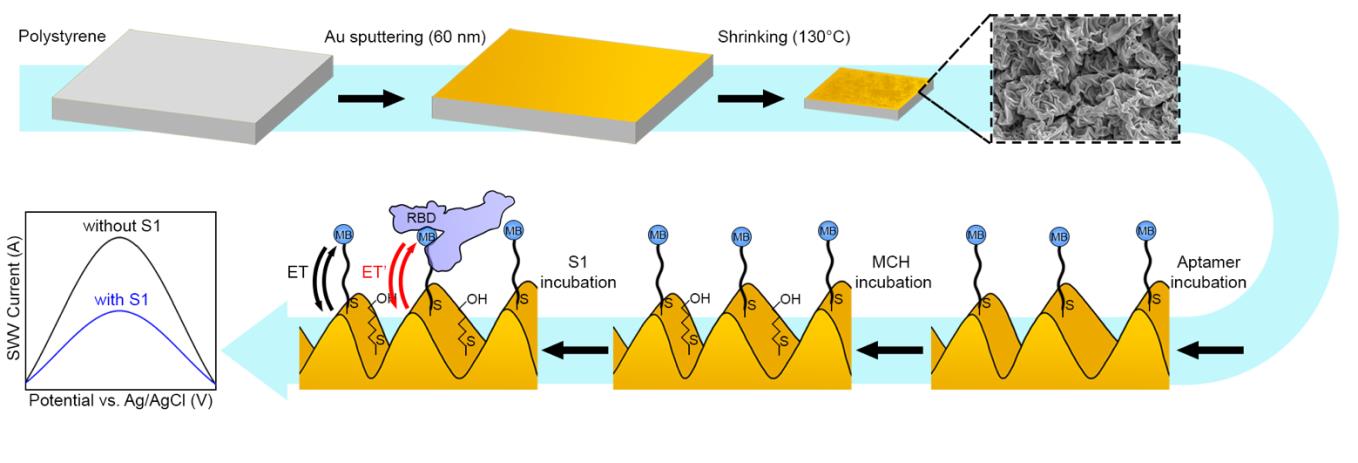SARS-CoV-2 Aptamer-based Electrochemical Sensor
We use the children’s toy, Shrinky-Dink© to fabricate aptamer-based electrochemical (E-AB) assays without the need for a clean room! Our most recently published work focuses on the detection of the spike protein of SARS-CoV-2 in saliva with the intent to provide a low-cost solution for widespread, point-of-care diagnosis and screening of COVID19 infection. These electrodes are implementable at population scale and demonstrate detection down to 1 ag mL-1 of the S1 subunit of the spike protein in pooled saliva.
Read more about this project here.

Figure 1. Process flow to create SDW E-AB sensors. First, a thin layer of gold is sputtered onto polystyrene plastic, which is shrunk to create wrinkles (SEM inset shows representative wrinkle morphology). The wrinkled surface is incubated with aptamers conjugated with MB, then incubated with MCH as the blocking molecule. After functionalization, the wrinkled surface was exposed to the S1 protein. Arrows indicate change in electron transfer with and without the spike protein attached (through the RBD). Graph illustrates change in current due to the change in electron transfer for spike bound MB on SDW elect rodes upon addition of S1 protein.